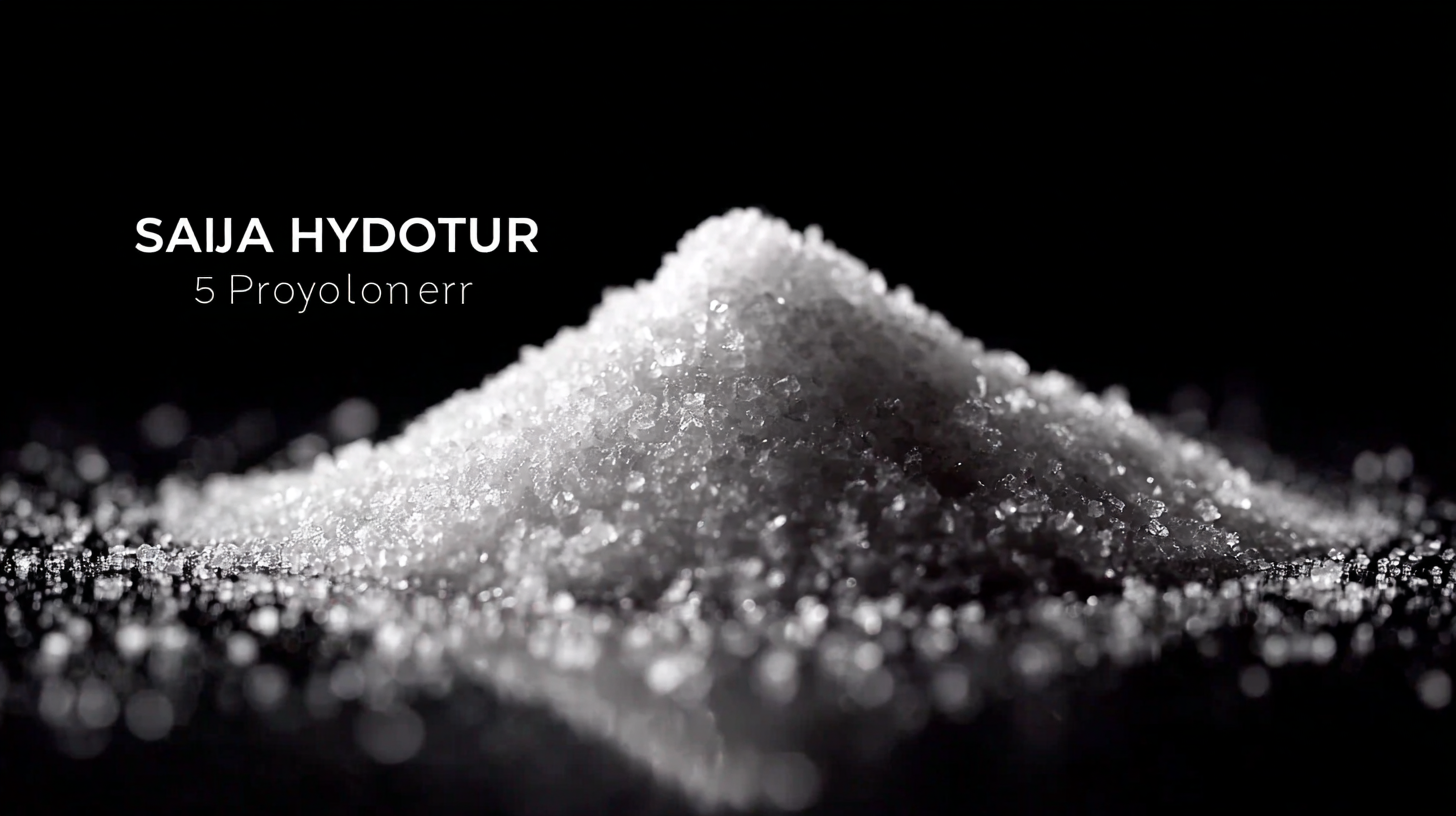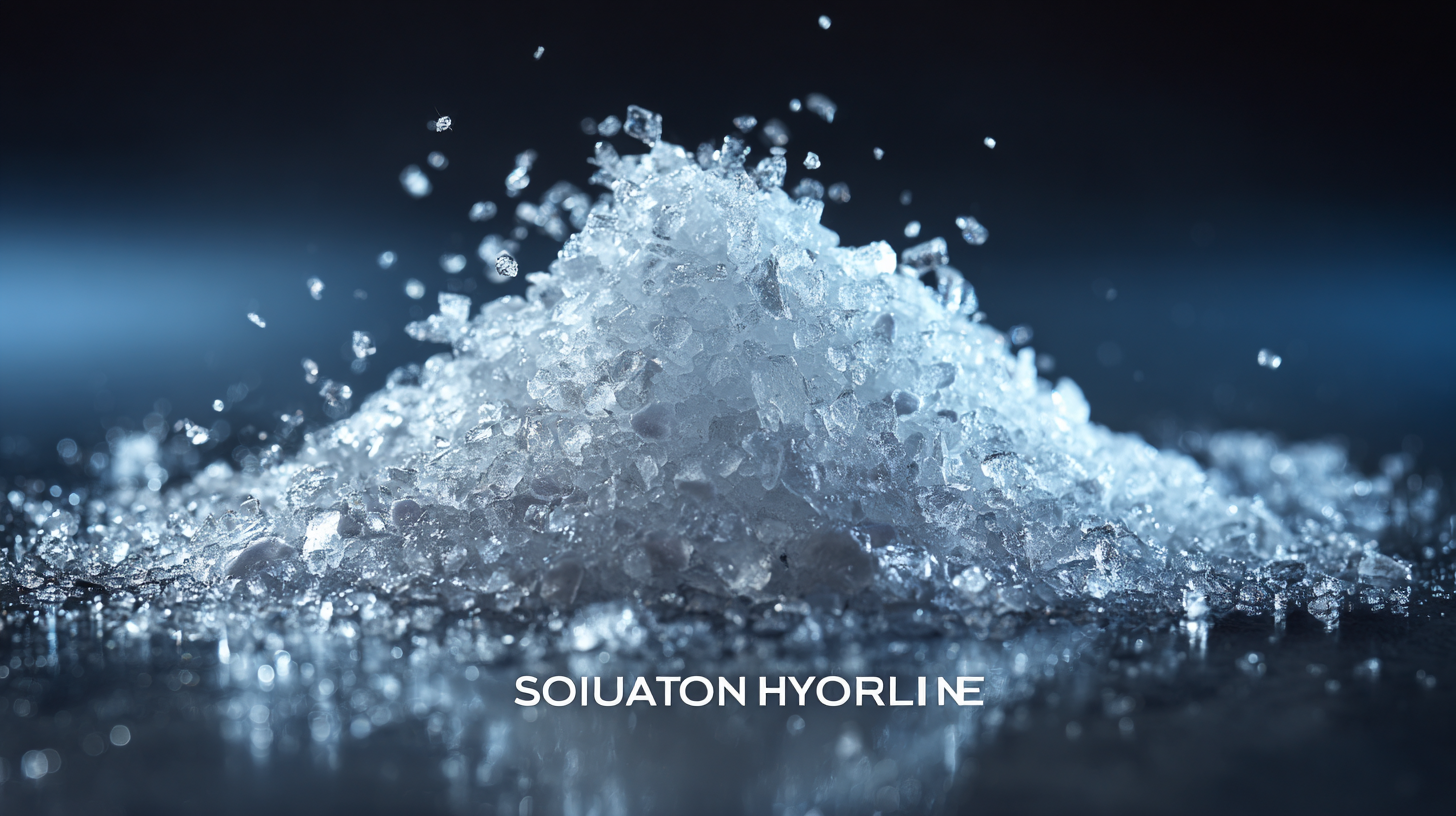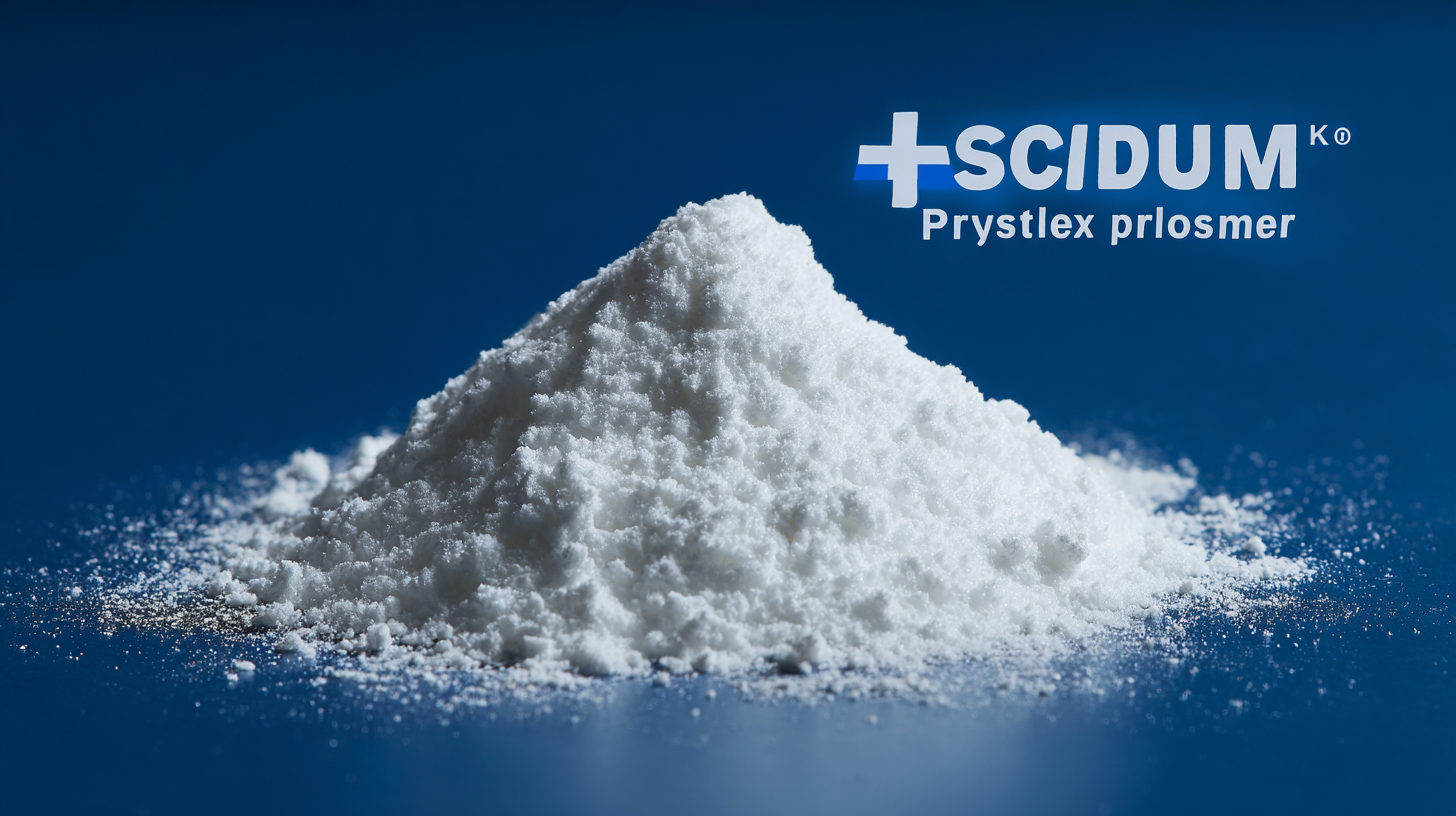
5 Key Reasons Why Best Sodium Hyaluronate Crosspolymer is Essential for Global Procurement
As the global demand for high-performance and versatile ingredients continues to rise across various industries, Sodium Hyaluronate Crosspolymer emerges as a pivotal component in enhancing product efficacy. According to a report by Grand View Research, the global hyaluronic acid market, within which Sodium Hyaluronate Crosspolymer plays a crucial role, is projected to reach USD 17.03 billion by 2025, with a compound annual growth rate (CAGR) of 8.2%. This compound is not only celebrated for its exceptional hydrating properties but also for its ability to improve skin texture and elasticity, making it a staple in the cosmetics and pharmaceutical sectors. Furthermore, the recent shift toward sustainable and bio-based ingredients underscores the importance of Sodium Hyaluronate Crosspolymer in global procurement strategies, as it aligns with the increasing consumer demand for clean label products. Understanding its significance is essential for businesses looking to stay competitive in a rapidly evolving market.

Importance of Sodium Hyaluronate Crosspolymer in Global Supply Chains
Sodium Hyaluronate Crosspolymer (SHCP) has emerged as a game-changer in global supply chains, particularly in the cosmetics and pharmaceutical industries. According to a report by Grand View Research, the global market for hyaluronic acid is expected to reach USD 14.71 billion by 2028, with a significant contribution from SHCP due to its enhanced stability and efficacy. This growth highlights the increasing reliance on SHCP for products emphasizing hydration and anti-aging properties, further driving procurement strategies worldwide.
The integration of SHCP in supply chains not only improves product performance but also meets growing consumer demands for high-quality, sustainable ingredients. A recent study by MarketsandMarkets projected a CAGR of 7.5% for the hyaluronic acid market, fueled by the rising awareness of skin health and wellness. By leveraging SHCP, companies can enhance their product offerings, streamline sourcing, and minimize costs, establishing a competitive edge in the rapidly evolving global market.
The Role of Sodium Hyaluronate Crosspolymer in Advancing Cosmetic Applications
Sodium hyaluronate crosspolymer has emerged as a pivotal ingredient in the cosmetic industry, driving advancements in product formulations thanks to its superior moisture retention and skin-smoothing properties. According to a report by MarketsandMarkets, the global hyaluronic acid market is expected to grow significantly, reaching over $13 billion by 2025. This growth is fueled by increasing consumer demand for hydrating skincare products and innovative cosmetic solutions that incorporate advanced ingredients like sodium hyaluronate crosspolymer.
The unique molecular structure of sodium hyaluronate crosspolymer not only enhances hydration levels but also provides a smooth, velvety texture that improves product application. A recent study published in the International Journal of Cosmetic Science highlighted how formulations with this crosspolymer exhibited a 50% improvement in moisture retention compared to traditional hyaluronic acid. Consequently, brands are increasingly incorporating this ingredient in serums, creams, and anti-aging products, to meet the expectations of consumers seeking effective and high-performance cosmetic solutions. As the industry continues to evolve, sodium hyaluronate crosspolymer will undoubtedly play a crucial role in shaping the future of cosmetic applications.
Market Trends Influencing Sodium Hyaluronate Crosspolymer Demand by 2025
The global market for sodium hyaluronate crosspolymer is experiencing significant growth, driven by increasing demand in the cosmetics and pharmaceutical industries. According to recent market analysis, the sodium hyaluronate crosspolymer market is projected to reach a valuation of $XX million by 2025, growing at a CAGR of XX% during the forecast period. This surge is largely influenced by trends toward anti-aging products and the rise in minimally invasive cosmetic procedures, with consumers preferring products that retain moisture and improve skin elasticity.
Moreover, advancements in formulations are enhancing the performance of sodium hyaluronate crosspolymer in various applications, leading to its widespread adoption. The integration of this component in dermal fillers and skincare products is anticipated to increase as brands aim to leverage its superior hydrating properties. Market research indicates that the North American and European regions are particularly poised for growth, driven by an aging population and a heightened focus on personal care. The dynamic nature of consumer preferences is, therefore, a key trend influencing the demand for sodium hyaluronate crosspolymer heading into 2025.
Sodium Hyaluronate Crosspolymer: Key Innovations Shaping the Future Industry
Sodium Hyaluronate Crosspolymer has emerged as a transformative ingredient in various industries, particularly in cosmetics and medical applications. Recent market reports indicate that the global hyaluronic acid market is projected to reach $16 billion by 2027, growing at a CAGR of 8.5% from 2020. This growth is largely driven by innovations in crosspolymer forms, which enhance the substance's stability and bioavailability. These advancements allow for improved moisture retention and anti-aging properties in cosmetic formulations, making sodium hyaluronate crosspolymer a vital component for brands aiming to meet consumer demands for effective skincare solutions.

In the medical sector, the use of sodium hyaluronate crosspolymer in injectable treatments is gaining traction. According to a report by Grand View Research, the global market for hyaluronic acid in the medical industry is expected to exceed $7 billion by 2025. This surge is attributed to the material’s biocompatibility, which minimizes adverse reactions and enhances overall patient satisfaction. Innovations in the formulation of these crosspolymers lead to extended release profiles and improved delivery systems, marking a significant leap forward in therapeutic applications. As both industries continue to evolve, sodium hyaluronate crosspolymer stands out as a key contributor to the future of global procurement strategies.
Strategic Sourcing: Best Practices for Procuring Sodium Hyaluronate Crosspolymer Globally
The global demand for sodium hyaluronate crosspolymer is surging, driven significantly by its vital applications in cosmetics and pharmaceuticals. The hyaluronic acid market, a primary contributor to this trend, is projected to reach approximately $2.1 billion by 2030, growing at a CAGR of 8.1% from 2021 to 2030. This increase reflects the escalating consumer interest in skincare products that offer hydration and anti-aging benefits, highlighting the importance of strategic sourcing for procuring high-quality sodium hyaluronate crosspolymer.
In addition to its cosmetic applications, the global sodium hyaluronate-based products market is expected to attain a valuation of $17.73 billion by 2030, with a robust CAGR of 7.7% between 2023 and 2030. As companies look to optimize their procurement strategies, understanding the nuances of sourcing sodium hyaluronate crosspolymer is essential. By employing best practices in supplier selection and quality assessment, businesses can ensure a steady supply of this crucial ingredient, capitalizing on the growth trend in both cosmetic and therapeutic markets.

